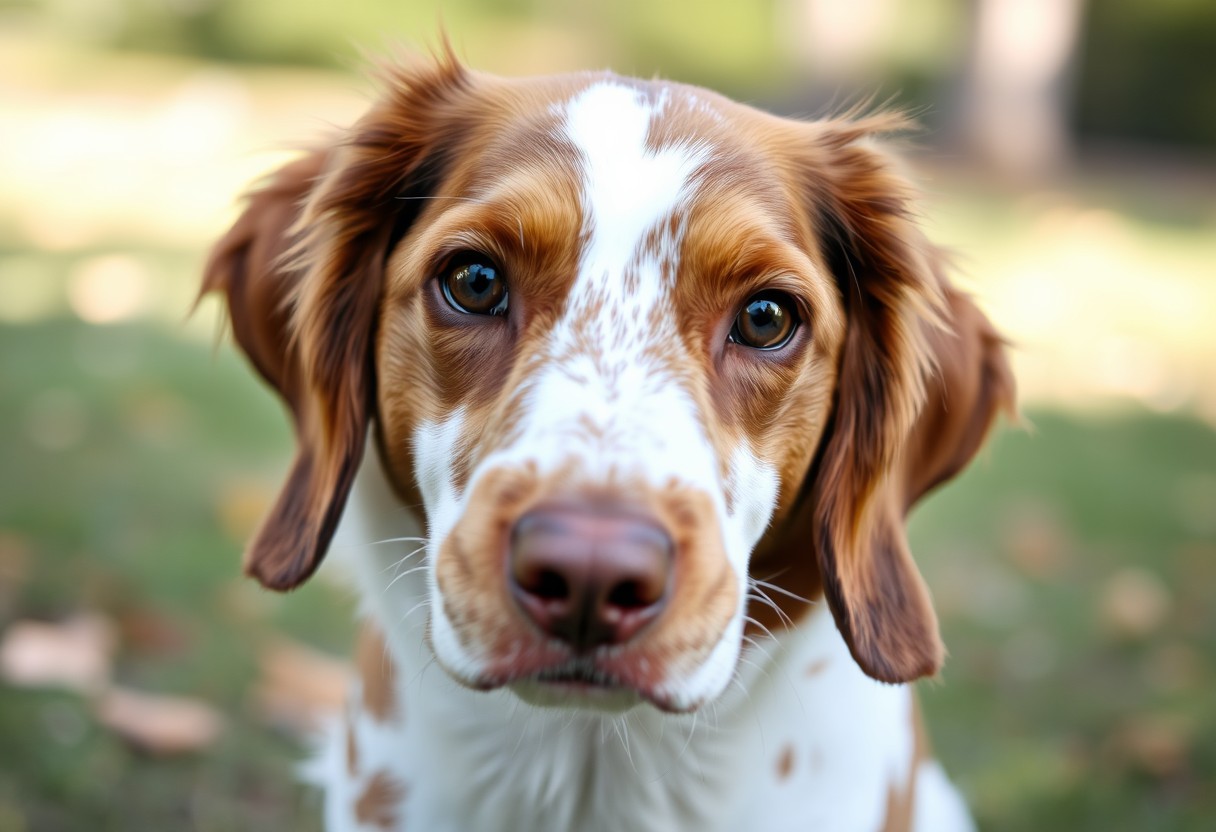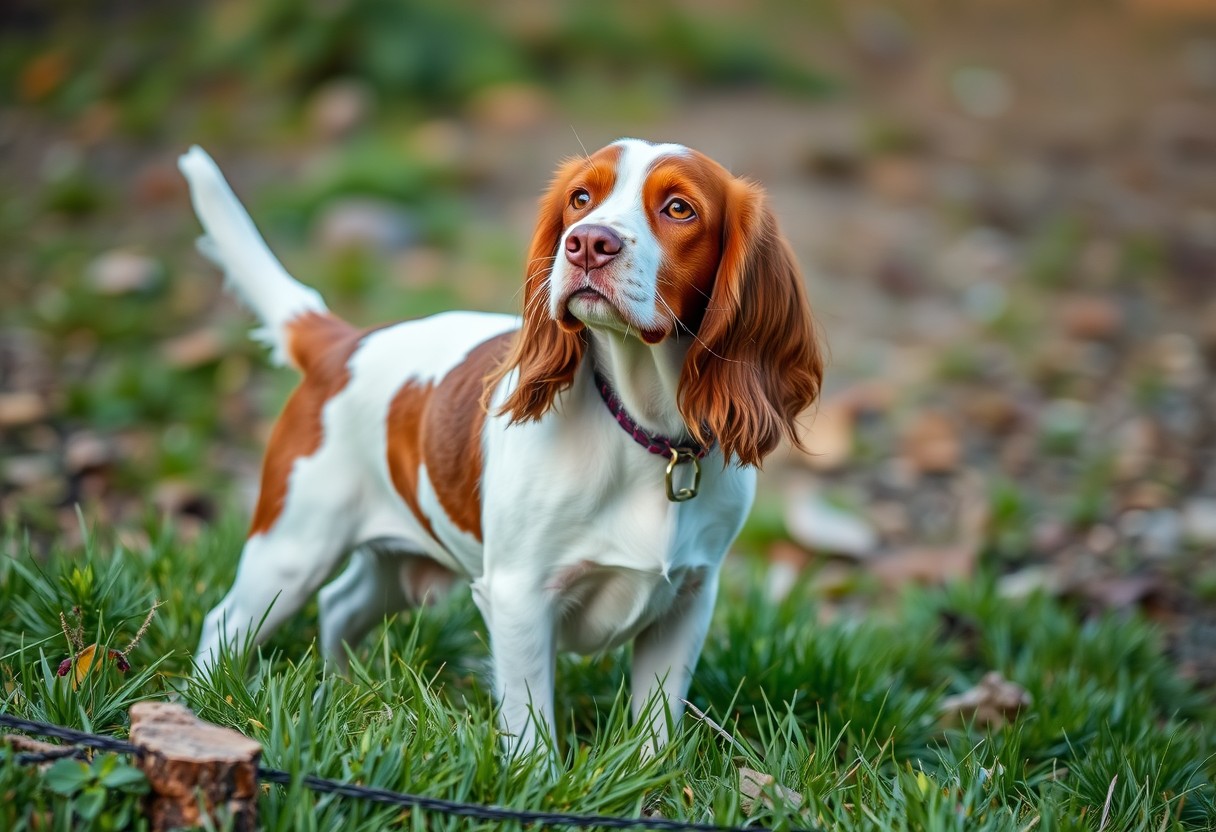Brittany Spaniel Tri-Color – Unique Coat Patterns

There’s a fascinating world behind the unique coat patterns of the Brittany Spaniel, particularly in its tri-color variations. You may be curious about how this breed’s distinctive color combinations not only enhance its appearance but also reflect its genetics and breed standards. Understanding these striking patterns helps you appreciate the beauty and individuality of your Brittany Spaniel, while also informing you about the care and grooming required to maintain their coat. Dive in to learn all about the captivating tri-color coats that set this breed apart!
Key Takeaways:
- Unique Coat Patterns: The Brittany Spaniel tri-color variations showcase distinct and attractive coat patterns, typically featuring combinations of orange, liver, and white that make them stand out.
- Genetic Diversity: The tri-color pattern is a result of genetic variations and different breeding practices that enhance the dog’s visual appeal while maintaining its hunting and sporting capabilities.
- Care and Maintenance: Regular grooming is vital for tri-color Brittany Spaniels to keep their coats healthy and vibrant, ensuring that their unique patterns remain looking their best.
Understanding the Brittany Spaniel
Before you choose a Brittany Spaniel, it’s necessary to understand this breed’s characteristics and historical background to ensure it fits your lifestyle and needs.
Breed Characteristics
An active and intelligent breed, the Brittany Spaniel is known for its friendly disposition and versatility. With a medium build, these dogs usually weigh between 30 to 40 pounds and stand about 17 to 20 inches tall. Their exceptional hunting instincts make them excellent sporting dogs, while their affectionate nature makes them loving family companions.
Historical Background
Understanding the history of the Brittany Spaniel can illuminate its unique traits. This breed originated in the Brittany region of France during the 19th century, where they were primarily bred for hunting birds. Originally classified as a spaniel, the Brittany later was recognized as a distinct breed due to its agility and ability to work closely with hunters. The breed gained popularity in the United States in the mid-20th century, reflecting their adaptability as both hunting dogs and family pets.

The Unique Tri-Color Coat
Some of the most striking features of the Brittany Spaniel are its unique tri-color coat patterns. Characterized by a combination of three distinct colors, these coats not only add to the dog’s charm but also make each spaniel beautifully unique. The blending of shades creates a vibrant appearance that sets the Brittany apart from other breeds, making it an irresistible option for dog lovers.
Color Combinations
To appreciate the beauty of the Brittany Spaniel, you must understand the various color combinations that can occur in their coats. Typical combinations include orange, white, and black, or liver, creating stunning contrasts. The unique way in which these colors interact enhances the dog’s overall appearance, allowing for a myriad of patterns that are sure to capture your attention.
Genetic Factors Influencing Coat Patterns
An understanding of the genetic factors influencing coat patterns is imperative when considering a Brittany Spaniel. The coat colors and patterns result from specific genes inherited from their parents, which control pigmentation. Several factors contribute to these stunning hues:
- Base colors determine the foundation of the coat.
- Dilution genes can lighten certain colors.
- Patterns such as ticked and spotted emerge due to specific genetic traits.
This complexity makes every Brittany Spaniel’s coat an interesting topic for dog enthusiasts.
The genetic makeup of a Brittany Spaniel plays a vital role in its coat patterns. The interplay of different genes affects not only the base color but also the presence or absence of certain patterns such as speckles or spots. Understanding these genetic factors allows you to appreciate the distinct look of your Brittany, as well as the uniqueness of your particular dog. The breeding practices employed can further influence these traits and lead to variation within the breed. This ensures that no two Brittanys are ever quite the same.

Care and Maintenance of Tri-Color Coats
Unlike other coat types, caring for a Brittany Spaniel Tri-Color coat requires special attention to maintain its vibrant colors and unique patterns. Regular grooming is necessary, as it helps prevent matting and keeps your dog’s skin healthy. Be sure to provide proper dietary nutrition that supports a shiny coat, along with routine veterinary checks to monitor for any skin issues or allergies that may arise.
Grooming Tips
Grooming your Brittany Spaniel Tri-Color should be a regular part of your routine. Here are some helpful tips:
- Brush your dog’s coat at least twice a week to remove loose hair and debris.
- Use a slicker brush or a grooming glove for effective detangling.
- Keep your dog’s ears clean and dry, as they can be prone to infections.
- Consider professional grooming every few months for optimal coat maintenance.
Perceiving grooming as an enjoyable experience can strengthen your bond with your furry friend.
Health Considerations
Care for your Brittany Spaniel Tri-Color should include proactive health measures. For instance, regular veterinary visits can help catch conditions commonly found in the breed, such as hip dysplasia and ear infections. Additionally, it’s vital to maintain a healthy weight to avoid obesity, which can exacerbate health issues. Keep an eye out for any behavioral changes, as they may signal underlying health problems. You should also ensure your dog receives routine vaccinations and parasite control, providing a strong foundation for a happy, healthy life.

The Role of Tri-Color in Breeding
All breeders value the unique aspects of coat color in Brittany Spaniels, and the tri-color pattern stands out as particularly sought after. This striking coloration not only enhances the visual appeal of the breed but also plays an vital role in breeding strategies. By selecting for tri-color patterns, you can contribute to the conservation of genetic diversity while meeting the preferences of potential puppy owners.
Breeding Standards
Standards set by breed clubs, like the American Kennel Club, outline the acceptable traits for Brittany Spaniels, including the tri-color coat. Your dogs should have a clear definition of these patterns, which typically consist of orange, liver, and white combinations. Adhering to these standards helps maintain the breed’s integrity and promotes a high-quality pedigree.
Popularity Among Breeders
Standards dictate that tri-color Brittany Spaniels have gained considerable attention among breeders. Their appealing appearance and rarity make them an attractive option for breeding programs, often allowing you to achieve better marketability. However, focusing solely on coat color can lead to unintended genetic consequences, so it’s vital to also prioritize health and temperament in your breeding decisions.
Breeding tri-color Brittany Spaniels can indeed be rewarding, as their unique appearance draws enthusiastic buyers. Nevertheless, always remember that this demand might lead to a focus on aesthetics rather than overall canine health. Striking a balance between the desirable tri-color coat and strong genetic traits is vital for ensuring well-rounded puppies. By doing so, you help to maintain the breed’s standards while fostering a positive reputation among fellow breeders and pet owners.
Comparisons with Other Brittany Spaniel Coats
Keep in mind that while the Tri-Color Brittany Spaniel boasts a stunning coat, it’s important to understand how it compares with other variations. Below is a comparison between the Tri-Color and Bi-Color coats, as well as insights into other unique coat patterns.
| Aspect | Tri-Color |
|---|---|
| Colors | Two hues plus white |
| Pattern | Distinct patches of colors |
| Popularity | Less common than Bi-Color |
Bi-Color vs. Tri-Color
One significant difference in appearance between the Bi-Color and Tri-Color Brittany Spaniels is the number of colors present. The Bi-Color typically features two solid colors, often with larger patches of each, while the Tri-Color includes a third, white component, creating a more dynamic look.
Other Variations
The color coat of the Brittany Spaniel can show other fascinating variations beyond Bi-Color and Tri-Color. Variations include the Orange and White and Liver and White, each bringing unique beauty. These coats can also exhibit a range of patterns such as roan and ticking, giving your dog an individualized appearance that stands out in a crowd.
Variations in coat patterns can significantly influence the appearance and overall impression of your Brittany Spaniel. While some patterns are less common, such as the Blue Roan or Orange Roan, they can add a unique flair to your pet’s look. It’s vital to consider that certain patterns may require more grooming to maintain their pristine appearance, ensuring your Brittany remains a proud representation of its breed.
Tri-Color Brittany Spaniels in Competitions
Despite their distinctive appearance, tri-color Brittany Spaniels are highly competitive in various dog shows and field trials. Their unique coat patterns often catch judges’ eyes, but it’s their agility, intelligence, and trainability that truly make them stand out. These traits not only enhance their performance but also allow you to appreciate their versatility in both conformation events and hunting tests.
Show Standards
Competitions for tri-color Brittany Spaniels adhere to specific breed standards that highlight their unique coat, which typically features a combination of orange, liver, and white. Judges evaluate these dogs on factors such as coat quality, structure, and overall demeanor. You’ll find that well-prepared specimens often leave a lasting impression, as conformity to the breed standard plays a crucial role in securing top placements.
Performance in Field Trials
On the field, tri-color Brittany Spaniels excel in trials that test their hunting abilities, stamina, and teamwork with their handlers. You’ll find that their keen instincts and remarkable adaptability contribute to their success in challenging environments.
To truly grasp the brilliance of tri-color Brittany Spaniels in field trials, you need to understand their high-energy nature, exceptional nose for tracking, and ability to traverse difficult terrains. They are often put to the test in competitive scenarios, where their intelligence and quick reflexes can be decisive. Training them requires patient guidance, but with consistent effort, you can witness their natural talents shine during various hunting activities. Always remember, their enthusiasm and drive make them a favorite not just in trials, but also as loving companions.
Conclusion
Hence, understanding the unique coat patterns of the Brittany Spaniel Tri-Color enriches your appreciation for this beautiful breed. By recognizing how these patterns can vary, you can make more informed choices in grooming and care, ensuring your dog stands out with its distinctive look. If you’re interested in showcasing this uniqueness, consider exploring the Brittany Spaniel Dog Pattern for inspiration in art and accessories. Your Brittany will not only be a beloved pet but also a striking representation of its breed’s charm.
FAQ
Q: What are the unique coat patterns found in Brittany Spaniels with tri-color markings?
A: Brittany Spaniels that showcase tri-color coats typically feature a combination of orange, liver, and white in their fur. The patterns can vary significantly, with some dogs having larger patches of color while others display a more speckled or roan appearance. The tri-color pattern is not only visually striking but also adds to the individuality of each dog, making them unique among their breed. Commonly, the orange and liver colors can appear in varying shades, contributing to a diverse array of coat patterns within the breed.
Q: How do the coat patterns of tri-color Brittany Spaniels affect their grooming needs?
A: The grooming needs of tri-color Brittany Spaniels are largely similar to those of other Brittany Spaniels, regardless of coat color. Regular brushing is necessary to remove loose hair and prevent mats, especially in areas where the coat might be longer or denser. The unique color patterns may highlight shedding, so a weekly grooming routine is recommended, using a slicker brush or a comb. Additionally, regular checks for dirt or debris are important as the coat can trap these elements. Bathing should be done as needed, but too frequent washing can strip the natural oils from their coat.
Q: Are there any health considerations related to the coat patterns of Brittany Spaniels, particularly those with tri-color coats?
A: Generally, the coat color and patterns of Brittany Spaniels, including those with tri-color coats, do not directly affect their health. However, skin conditions can arise in dogs of any coat color, so owners should be vigilant about the overall skin health. Regular veterinary check-ups can help identify any potential issues early. It’s important to note that while coat color has no direct correlation with inherited diseases, responsible breeding practices should always be considered to minimize genetic health problems in the breed overall. Ensuring that your Brittany Spaniel has a good diet and proper care will contribute to maintaining their overall health regardless of their unique coat pattern.





